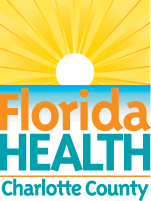Health Disparities & Initiatives
Contact Us
- 941-624-7200
-
Mailing Location
1100 Loveland Boulevard
Port Charlotte, FL 33980
The purpose of the Minority Health Plan is to increase the quality of life within Charlotte County. To develop this plan, Charlotte County health department followed the Florida Department of Health’s approach of multi-sector engagement to analyze data and resources, coordinate existing efforts, and establish collaborative initiatives. This plan addresses social and economic barriers within Charlotte County. This plan is not a county health department plan; it is a county-wide plan through which the Taskforce, including a variety of government, non-profit, and other community organizations, align to address the issues that impact health and well-being in the county.
The Taskforce identified and reviewed health disparities data in Charlotte County identifying mental health as an issue effecting the vulnerable and marginalized populations. Throughout multiple community meetings, mental health has consistently been brought to the forefront for concern for the community.
Members of the Taskforce worked collaboratively to identify their organizations’ barriers to addressing relevant priorities to their organization’s mission. Common themes were explored as well as collaborative strategies to overcome barriers.
For Charlotte County, the highest rates of suicide in 2020 were among 20–24-year-olds while high school students who, in the past year felt sad or hopeless for two or more weeks in a row and stopped doing usual activities in the Hispanic Population was the highest rate at 35.3%. By fostering connections and identifying solutions to housing instability issues, an upstream strategy to combating sadness, hopelessness, and depression in high school students is thought to have an impact not only on their mental health but also on the suicide rates of these young adults in the future.
Using that same upstream logic means involving veterans earlier in life to reduce the rates of suicide in the 85 and older age group. The rates of suicide among veterans in that age group was an alarming 60.4 suicides per 100,000 in 2020. Veterans, especially in that age range, are often isolated and alone. In addition, veterans face barriers accessing mental health care as providers are limited, transportation is limited, and social supports for this vulnerable population are limited. Veterans' mental health in the future and the suicide rates among this community can both be significantly improved by empowering them, building connections, and giving them a purpose.





Connect with DOH